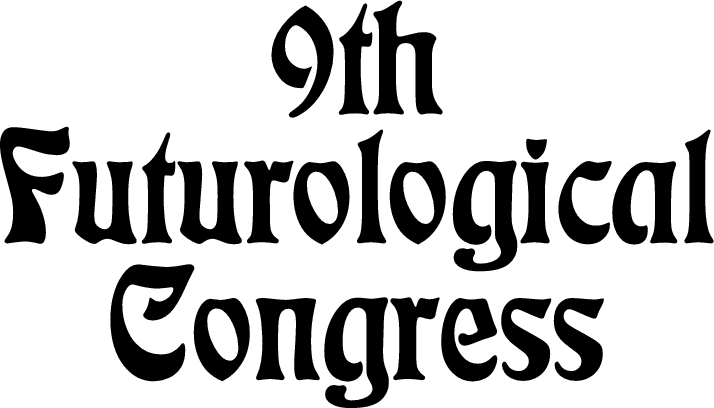The Eighth World Futurological Congress was held in Costa Rica… Each speaker was given four minutes to present his paper, as there were so many scheduled-198 from 64 different countries. To help expedite the proceedings, all reports had to be distributed and studied beforehand, while the lecturer would speak only in numerals, calling attention in this fashion to the salient paragraphs of his work. To better receive and process such wealth of information, we all turned on our portable recorders and pocket computers (which later would be plugged in for the general discussion). Stan Hazelton of the U.S. delegation immediately threw the hall into a flurry by emphatically repeating: 4, 6, 11, and therefore 22; 5, 9, hence 22; 3, 7, 2, 11, from which it followed that 22 and only 22!! Someone jumped up, saying yes but 5, and what about 6, 18, or 4 for that matter; Hazelton countered this objection with the crushing retort that, either way, 22. I turned to the number key in his paper and discovered that 22 meant the end of the world.
Stanislaw Lem “The Futurological Congress”
“The Futurological Congress” is Ijon Tichy’s grotesque report written by Stanislaw Lem in the early seventies. It presents an overpopulated and overexploited Earth of the first half of the 21st century, whose herded residents seek refuge in pharmacologically synthesized collective hallucinations. Lem’s satirical vision contesting popular futurological visions of that time remains a clear warning against the greed of consumer societies willing to yield to their desires at the irreversible expense of our planet’s ecosystem.
Half a century later, Lem’s message becomes even more relevant. This is shown by the Ninth Futurological Congress project, a form of an artistic manifesto, whose authors took the book’s appeal seriously: we don’t stand idly by when we hear the cry of “Man the pumps!”.
The initiators and main organizers of the conference are Mareike Dittmer (co-publisher of the “Frieze Magazine”) and the artist Julieta Aranda (the founder and editor of www.e-flux.com) — both influential in the art world.

9th Futurological Congress, Ufficio Primo, Warsaw 2016 (fot. by Mikolaj Sekutowicz)
They stated that because “the present has been behaving so badly,” we have to roll up our sleeves and realize that today’s choices and decisions will largely determine the fate of future generations. The scale of the difficulties and the momentum of this ambitious project was demonstrated by the spectrum of topics discussed during the first meeting, which took place on 24 September in futuristic interiors of Ufficio Primo in Warsaw. The Ninth Futurological Congress debated about artist’ impact on harmonious development of the society (Anda Rottenberg, an art historian, art critic and curator), on astronomical aspirations of our species (Natasha Ginwala, a curator, researcher, and writer), on the impact of modern medicine on our consciousness (Antonia Majaca, Institute for Contemporary Art at the Graz University of Technology), on the commercial exploitation of space (Dr. Rory Rowan, Political Geography at the University of Zurich) and on individual’s emotional condition (Marcus Steinweg, a philosopher, University of the Arts, Berlin).
The 9th Futurological Congress is being organised in partnership with Ufficio Primo and with the generous support of Adam Mickiewicz Institute and Warsaw Gallery Weekend.
see more: www.futurological-congress.com

